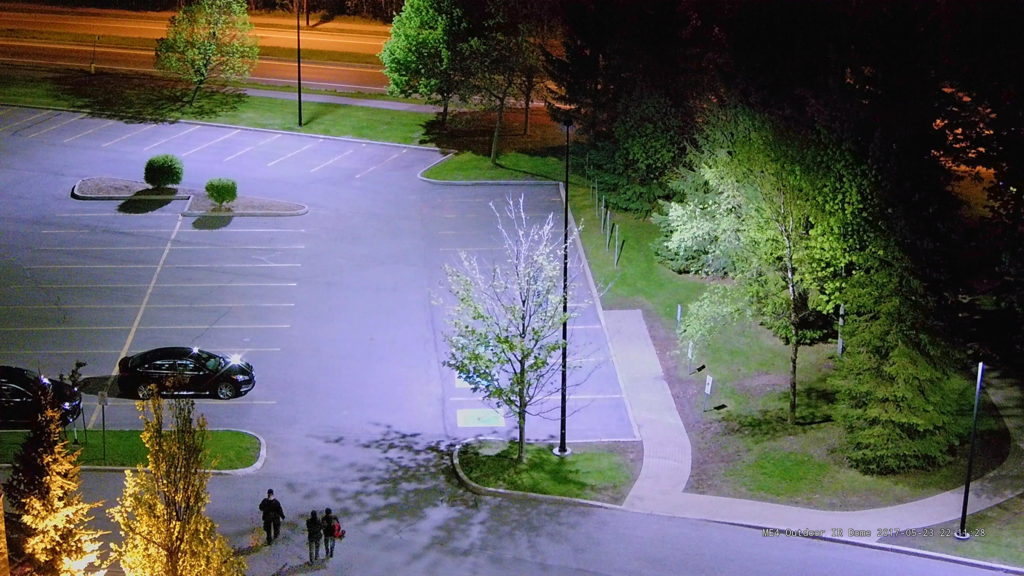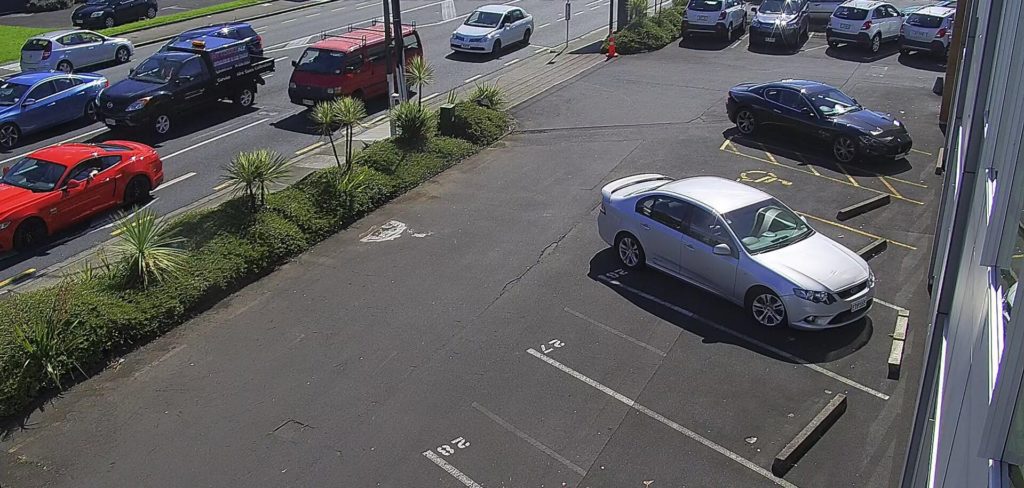What Size Purple Drive For 16 Ip Cameras
As more than businesses motion from analog to high-definition (Hd) IP cameras, at that place'south increasing demand for video recording solutions with larger storage capacities.
Five years ago, commercial NVRs/DVRs with 2TB or 3TB hard drives were the norm. Today, purpose-congenital NVRs/DVRs for enterprise surveillance tin conform over v times that amount and more when direct-attached storage (DAS) or network-attached storage (NAS) devices are added. Of grade, all of this storage comes at a cost. Even if your recording solution is scalable, your budget probably is not, so finding ways to reduce storage without degrading video quality is condign more than of a priority.
This is specially true for businesses with requirements around video archiving. Many banks, K-12 schools, and emerging businesses like cannabis dispensaries are required to proceed video for 30, sixty or even xc days, depending on regime requirements.
If y'all're struggling with demands for more video storage, or if you need to continue video for a specific catamenia of time, consider the following to aid extend NVR/DVR storage capacity:
1. Determine where HD video is needed – and where it'southward not
The biggest cistron in this give-and-take is IP cameras.
A video epitome captured past an Hard disk IP camera is roughly four times the size of an image captured by an analog camera. That means information technology requires four times the bandwidth and storage capacity, so it's of import to consider exactly where y'all're using HD video.
In some cases, it's simply non necessary. For example, if loss prevention is your main goal, keep Hard disk cameras over your high-value assets or bespeak-of-sale terminals, but use lower resolution cameras elsewhere.
2. Tape on motility
If you lot don't have legal requirements around 24/7 recording, configure your NVR/DVR to record on motion. It'southward one of the simplest ways to reduce your storage. The bulk of surveillance video is never used; frequently, it's only when something occurs that you'll need to review your video and investigate.
3. Practise the math
Since many factors like camera bit charge per unit, video compression, frames per second, and scene complexity impact storage, use a CCTV or camera storage calculator to determine the exact amount of bandwidth and storage you'll need. Many video surveillance manufacturers, including March Networks, offer these tools complimentary of charge every bit a user-friendly manner to assist you program your organization.
Using i of these tools, you can determine ahead of fourth dimension how your photographic camera recording will affect your storage and bandwidth, and where you lot might be able to make some adjustments.
4. Take advantage of camera settings
Many IP cameras have settings that can aid you control the bit rate and reduce your storage. March Networks recently optimized the H.264 compression in our ME4 Serial and SE2 Series IP Cameras with a Low Bit Rate (LBR) setting that automatically manages the bit rate to give you the best video quality with the lowest bit rate, based on scene complexity.
Our LBR mode can reduce storage and bandwidth consumption past every bit much equally 50% in most applications. In our own tests of this feature, nosotros've seen video streams that can drib beneath i Mb/s at 2MP (at 15 images or frames per second) with no noticeable deposition of video quality.
Here is an example to illustrate our indicate:
Let's say you operate a cannabis cultivation business that'southward required to tape video continuously for 24 hours a 24-hour interval, and continue that video for xc days. The police force in your state as well requires you to use at to the lowest degree 720p camera resolution. Yous need 60 cameras to cover your entire facility; naturally, y'all want the best image quality possible with the least amount of storage.
Using a typical 2MP IP photographic camera, capturing detailed video with high scene complication at 15 fps, you lot would need a total of 360 Mb/s of bandwidth, and 111.two TB of storage to continue your video for xc days.
Now, try that scenario again with a camera that uses a LBR setting.
| Camera | Scene complexity | Fps | Mb/due south | Storage |
|---|---|---|---|---|
| 2MP IP Camera | High | xv fps | 360 Mb/s | 111.2 TB |
| 2MP IP Camera with LBR | High | 15 fps | 117.two Mb/s | 36.2 TB |
With an LBR characteristic, yous just need 117.2 Mb/southward of bandwidth and 36.2 TB of storage – almost a 3rd of the amount required compared to a photographic camera without the LRR mode. Once again, this is using the verbal same factors of 2MP resolution, loftier scene complexity, and recording at 15 fps.
five. Exist mindful of your cameras' field of view
Even with an LBR setting, unnecessary move in your cameras' field of view (FOV) can however increase your data rates and swallow upwards storage. Here are a few common things to picket out for:
- Total darkness and uneven lighting – Especially for night surveillance, properly illuminating your FOV takes the burden off your IR camera, reducing proceeds and storage. Take advantage of any natural or ambient lighting. An evenly lit scene can allow a good IR security camera to operate in color style all night as if it were daytime. Check out this example below.

- Flickering lights – A loose or dying bulb tin can mimic motion and wreak havoc on your storage and data rates. Alter the light bulb, or if the camera is not in-sync with the light, try setting the photographic camera's shutter to a specific frequency (50Hz or 60Hz). You can make this change in the camera's motorcar settings.
- Busy backgrounds – If your intention is to capture video of a parking lot, but you accept a busy highway running behind it (every bit in our case below), that unnecessary motion in the scene could exist eating upwardly your storage. A unproblematic shift of the FOV could eliminate this.
-

- Very bright lights – These tin can cause your photographic camera'due south day/nighttime sensor to malfunction. IR illuminators tin also attract bugs at dark, which in some cases tin can create constant motion. Check out this example. In cases similar these, you're improve to disable the IR feature birthday.
- Air current or vibration – If the wind is blowing your camera around, or your photographic camera is installed on a structure that vibrates, such equally a bridge, use a photographic camera with Electronic Prototype Stabilization (EIS). This will stabilize your image and reduce data rates at the same fourth dimension.
Need to scale your current March Networks recorder?
Finally, if you've done all of the above, but you still demand more than storage, you can ever increment the drive capacity in your NVRs/DVRs.
March Networks recorders can now arrange drives with up to 12TB and 14TB of storage. Find the exact drives you need with our list of certified difficult drives for fixed recorders.
Got a question, or want to leave a annotate? Post it beneath.
Source: https://www.marchnetworks.com/intelligent-ip-video-blog/simple-tips-to-extend-your-nvr-dvr-storage-capacity/
Posted by: fullerdaunt1999.blogspot.com

0 Response to "What Size Purple Drive For 16 Ip Cameras"
Post a Comment